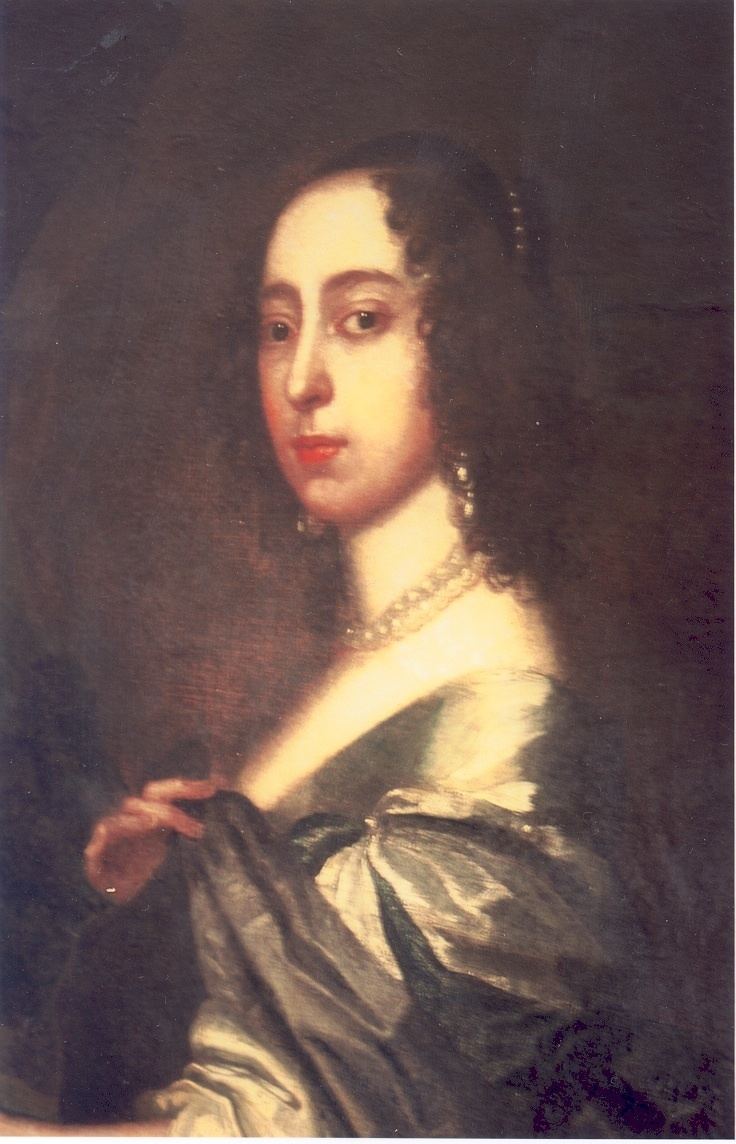 | ||
Rachel (or Rachael) Bourchier, Countess of Bath (28 January 1613 – 11 November 1680) was an English noblewoman and writer, best known for her activities during the English Civil War. She was the wife of Henry Bourchier, 5th Earl of Bath.
She was born at Mereworth in Kent, the fifth daughter of Francis Fane, 1st Earl of Westmorland, by his wife Mary Mildmay, daughter of Sir Anthony Mildmay of Apethorpe Hall, where Rachel grew up. Rachel's brother, Mildmay Fane, 2nd Earl of Westmorland, was close to King Charles I of England, who was godfather to Fane's son in 1635; Mildmay was also a poet and dramatist. Another of Rachel's brothers was Colonel George Fane, who also supported the Royalist cause. As a teenager, Lady Rachel Fane is known to have written masques for performance at family entertainments. One of these was her "May Masque" of 1627.
She married Henry Bourchier of Tawstock in Devon on 13 December 1638, at the church of St Bartholomew the Great in London; she was aged 25 and her husband was 50. By 1642 the earl was active in the Royalist cause, and wrote to his wife from York and London about how things were progressing. In December 1642, it is recorded that the House of Lords ordered Thomas Browne to return some horses he had commandeered from the countess on behalf of the parliamentary commander, Robert Devereux, 3rd Earl of Essex.
The earl and countess had no children, but in 1663, Rachel became guardian of her nephew, Sir Henry Fane, the only child of her brother George.
When the earl died in 1654, Rachel arranged a striking monument in his memory, which survives in the south aisle chapel of St Peter's Church, Tawstock. Opinions vary as to its artistic merit, with William George Hoskins calling it ugly, while J. H. Marland said it was "almost unequalled in singularity and absurdity". It is constructed in black and white marble, with four dogs supporting the sarcophogus on their shoulders and a black obelisk at each corner.
Six months after the earl's death, his widow married Lionel Cranfield, 3rd Earl of Middlesex, who was some years her junior. Her new husband was a Gentleman of the Bedchamber to King Charles II of England. The marriage was not a happy one, and the couple lived apart from 1661 onwards. After Lionel's death in 1674, Rachel did not remarry.
Legacy
The marble statue that stands in St Peter's Church, Tawstock, as a memorial to the Countess of Bath is actually a replica, probably by Balthasar Burman, of an earlier statue made in memory of Mary Talbot, Countess of Shrewsbury.
Sir Anthony van Dyck painted two portraits of Rachel, one prior to her marriage and another in 1641, for which she is recorded as paying him £20; only an engraving of the latter by Pierre Lombart survives. A miniature of the countess by David des Granges is held by the Fitzwilliam Museum, Cambridge.
In a 1670 work by Sir Kenelm Digby, a recipe for syllabub appears, attributed to the countess.
